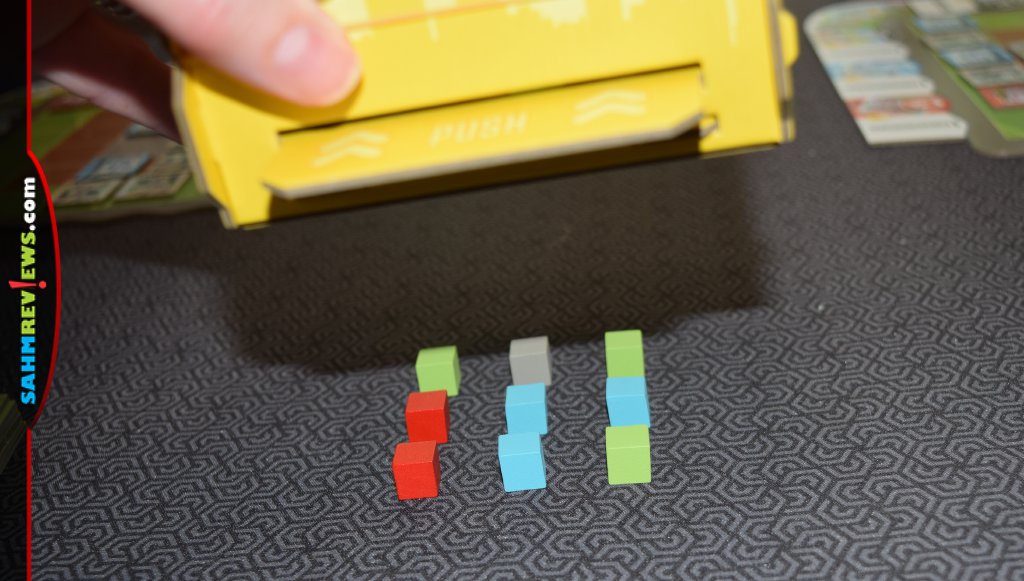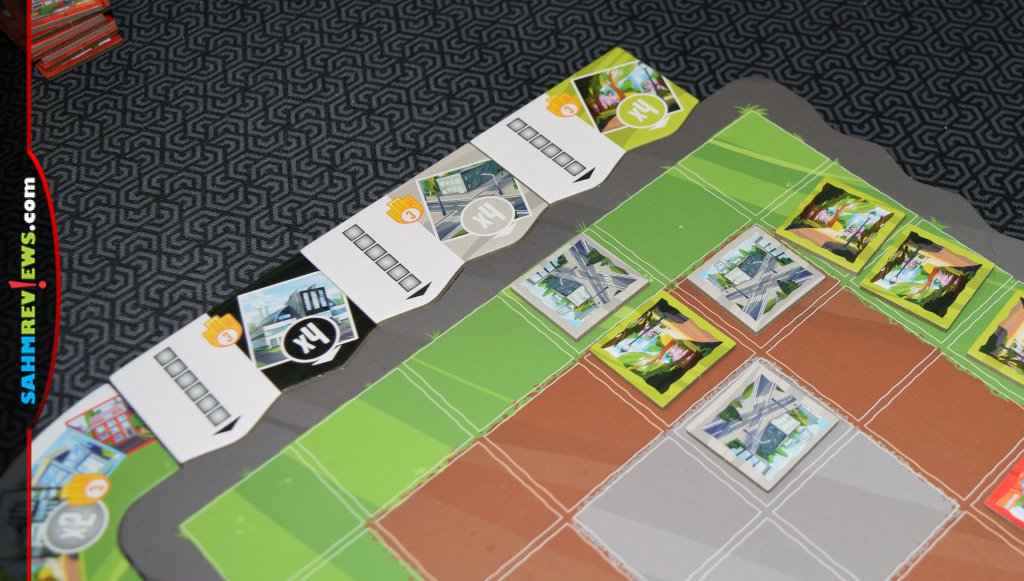Shake That City Game Overview

There are few genres of games that I don’t enjoy, but I definitely gravitate toward some more than others. One that I don’t talk about very much but certainly enjoy involves simultaneous play. With games like Karuba, That’s Pretty Clever, Between Two Cities and Take It To The Limit, there isn’t any down time. Players are always taking their turn. These types of games are ideal for those groups who have people that tend to check out in-between turns. In some cases, like with Tiny Towns from Alderac Entertainment Group, you alternate being the active player which gives you some control in what other players may do. Shake That City, also by AEG, follows that same model.

In Shake That City, you’re trying to design the best city. Yes, we’ve played several other types of city-building games but they’re all unique, as is this one. Each player begins with a board and seven bonus point tiles. One player randomly places their bonus tiles alongside their board in the same alignment and (directional) orientation as the active player. Place the cube shaker (filled with cubes) and the round tracker in the center of the table and building tiles within reach of everyone.

For those of us who have resided in California, the first inclination is that this game involves earthquakes. It doesn’t. The name is derived from the action you take to learn what pieces you can play. The active player shakes the cube shaker, releases the lever then lifts it up to reveal nine individual cubes. Each color cube represent a different type of building or property, all which have unique scoring metrics.

The active player selects which color (tile type) they want to incorporate into their city. All remaining players may choose any of the other colors and may duplicate with one another, just not the active player.

Everyone then places the corresponding color tile on their board in the same orientation as the pieces in the 3 x 3 shaker grid. You can’t rotate the orientation or skip pieces. It’s all or nothing. You need to select a different color if something is going to mess up your scoring plans.

Which segues into the actual scoring parameters… Gray cubes represent roads and must be connected to concrete (edge of the board) in order to earn points. Blue cubes are shops and therefore need to be next to roads, scoring more depending on how close they are to the center of town. Green cubes (naturally) are parks and help beautify the city. They score when placed next to homes and/or factories. Black cubes represent factories, requiring placement next to roads or other factories. Finally, red cubes represent homes and score solely based on groupings, no matter how large or small. Of course, if they’re next to a factory then they score nothing because nobody wants their neighborhood next to a factory.
What makes Shake That City interesting is that each player is limited by several factors: which cubes come out of the shaker, where on the 3 x 3 grid those cubes align, what is available after the active player selects, which spaces are open on their own board and how specific tiles score based on placement. You may have room to put certain tiles, but you may not want to! In addition to considering how individual development tiles score points, you also should keep an eye on the rows and columns. These provide bonus opportunities for scoring if you’re able to meet the designated criteria.
After all players have completed their selection, the marker is moved on the round tracker. The process continues with the next active player. In the final three rounds, all building colors are available so you can fill in final gaps. Score the buildings and bonus tiles to determine who is the best city developer.
Shake That City is a fast-paced game with everyone involved the entire time. We’re excited to be able to offer a giveaway for one of our readers. (It’s been a while since we ran a giveaway, we know.) Know you love it already and want a copy for your next game night? Grab a copy from your local game store, on Amazon or direct from AEG.
Shake That City Game Giveaway




Games with simultaneous actions help keep the game moving. In thing I am not a fan of in games is when there is a lot of down-time between turns. Simultaneous actions help keep all players engaged throughout the game.
Simultaneous actions keeps the game moving and the players involved more
No down time between turns
Less chance for interruptions or loss of interest due to downtime.
keeps things moving!
I can’t think of a game that I’ve played with simultaneous actions.